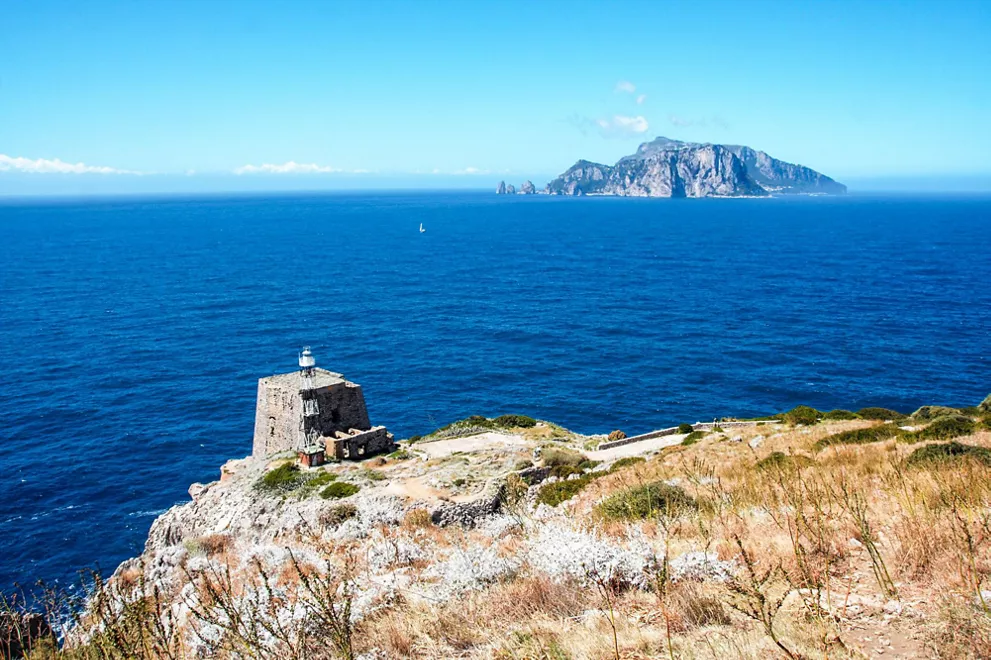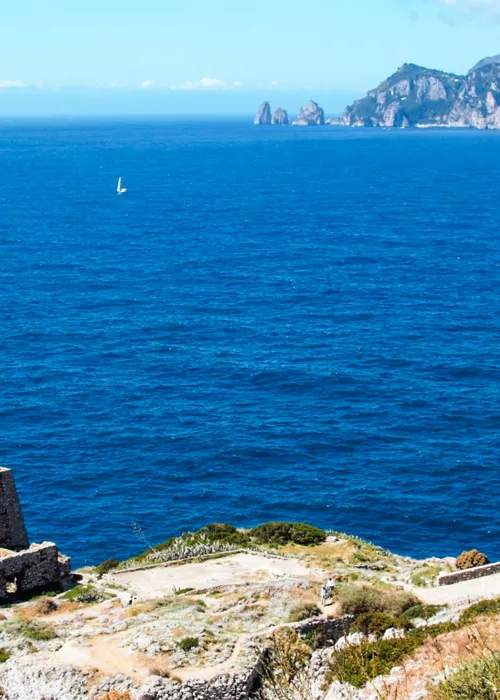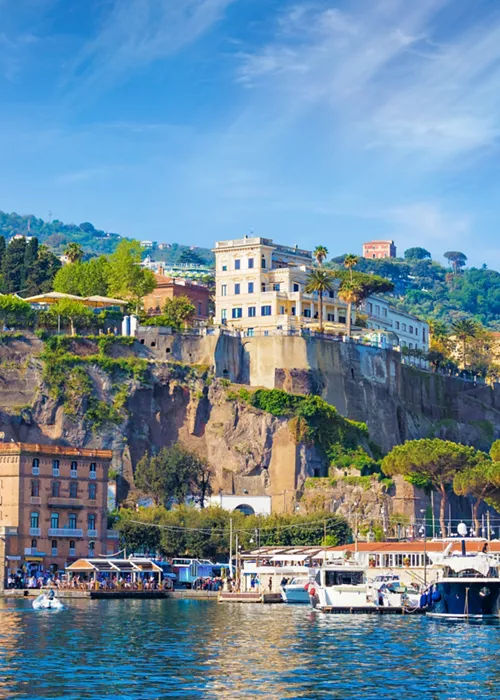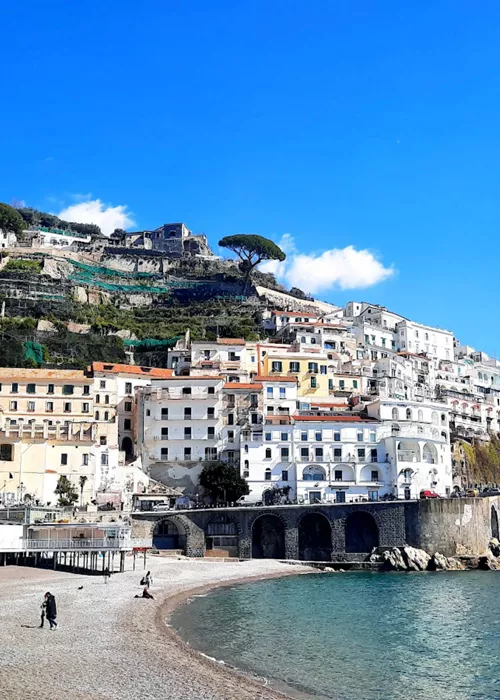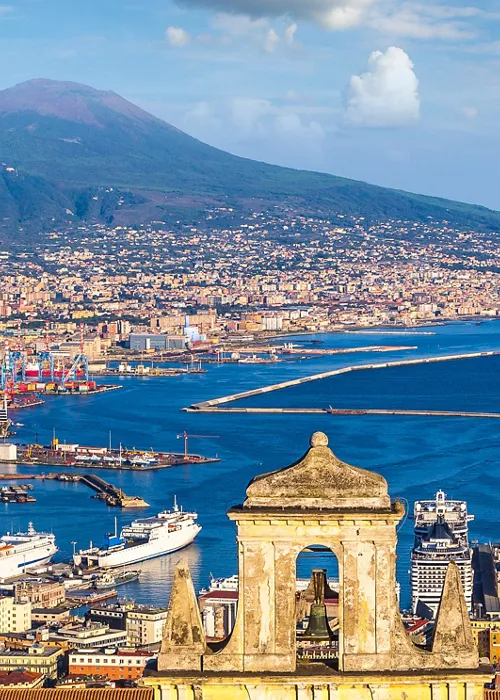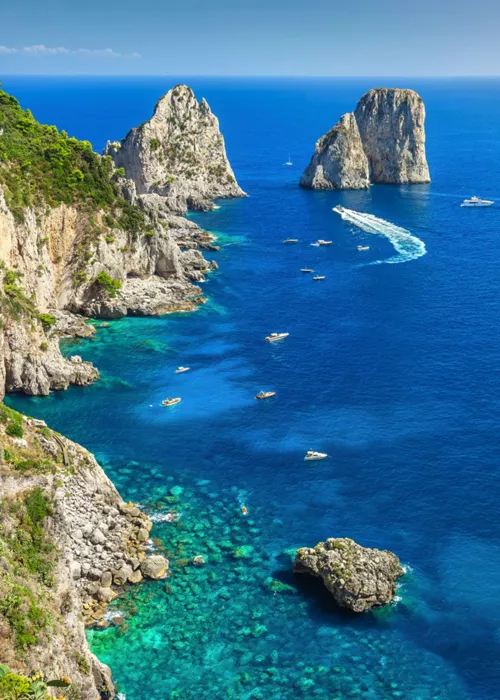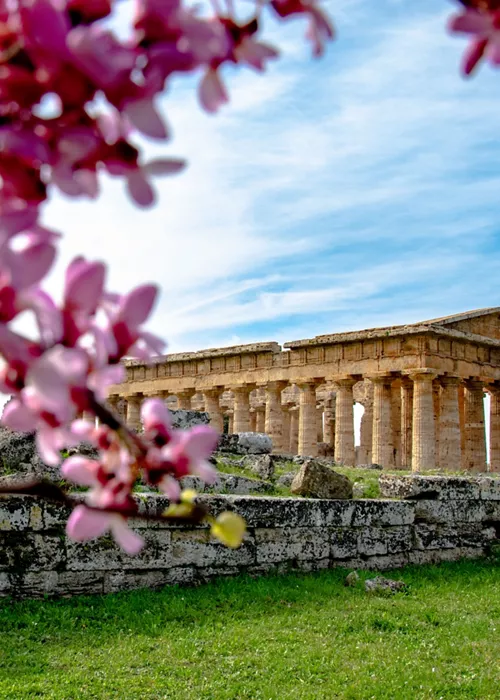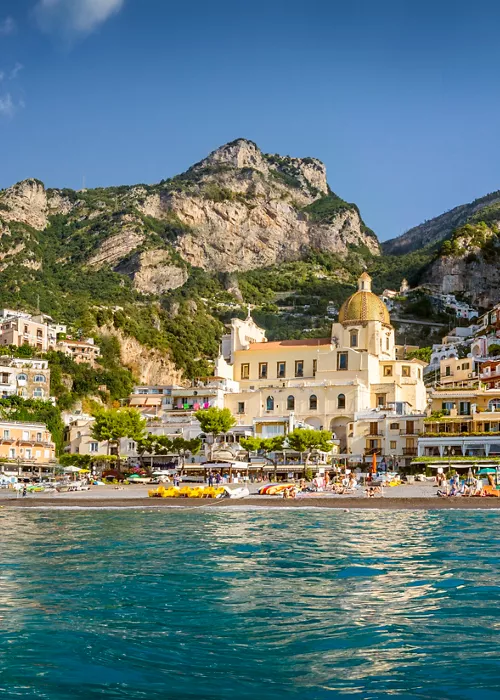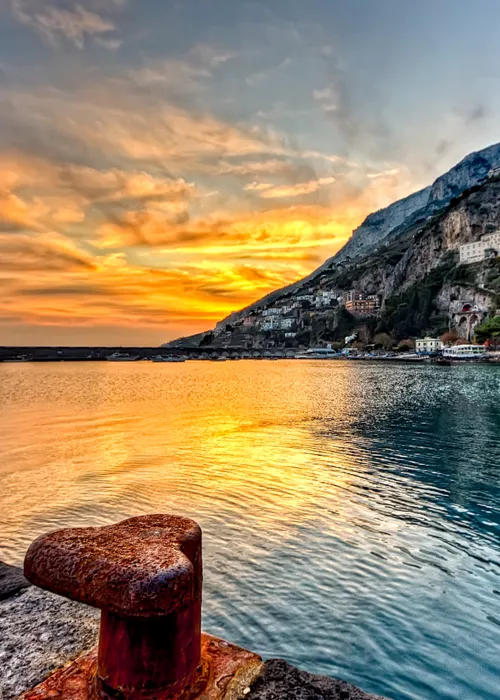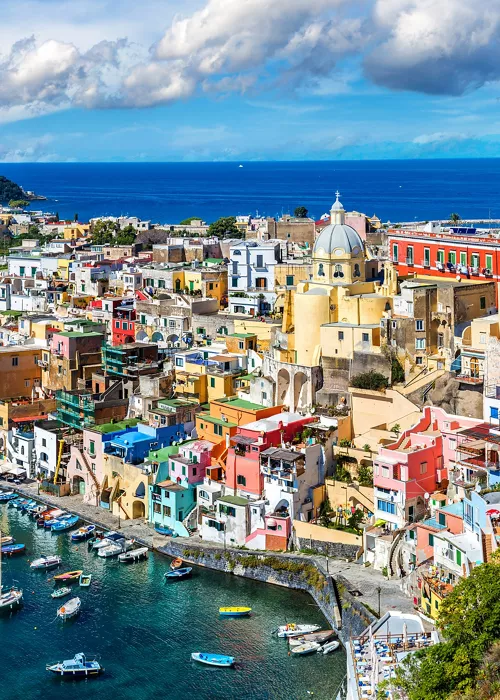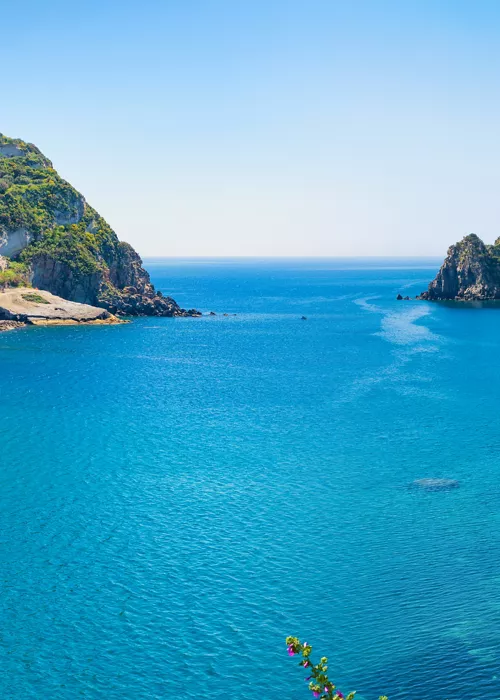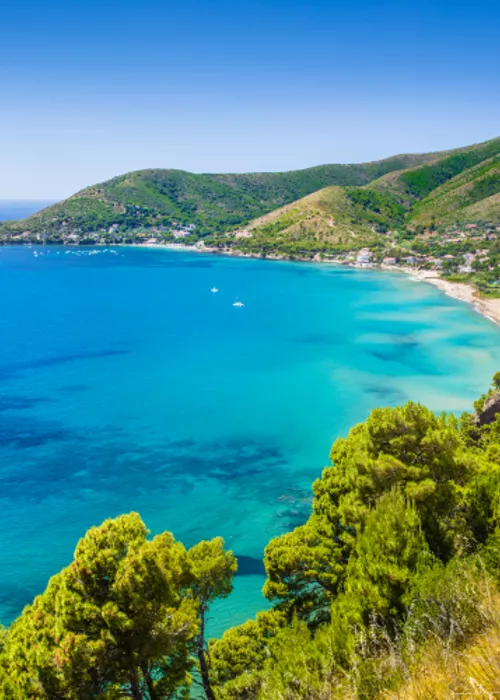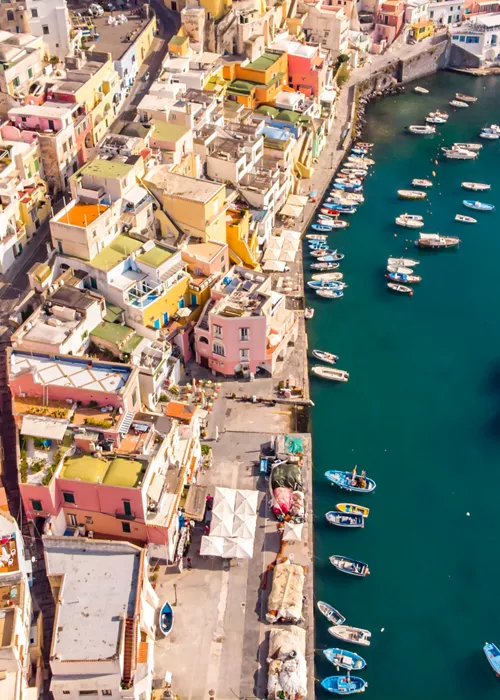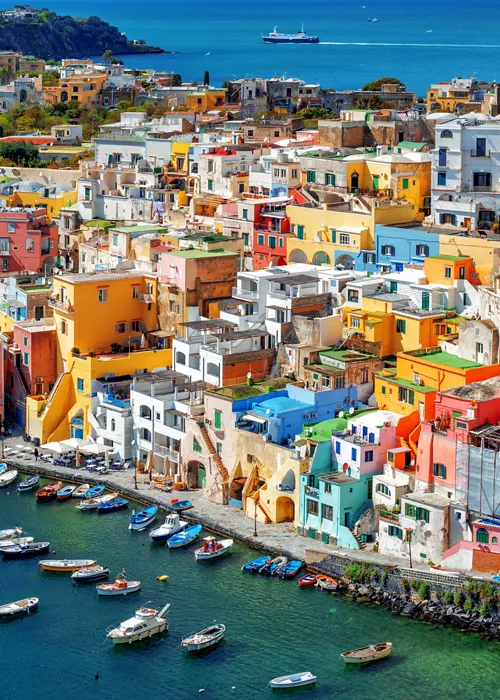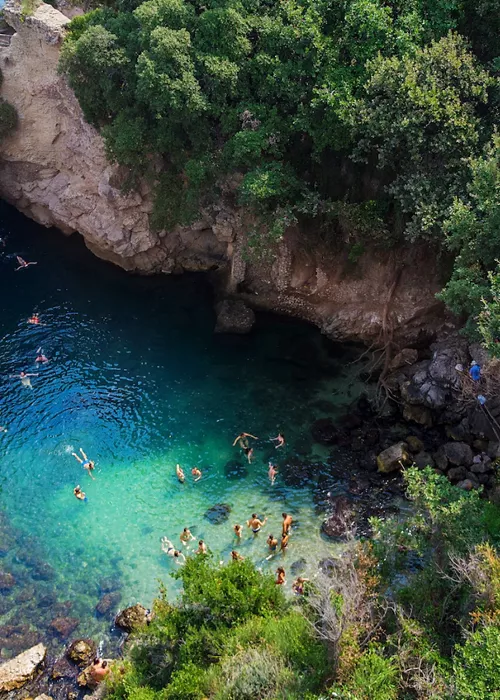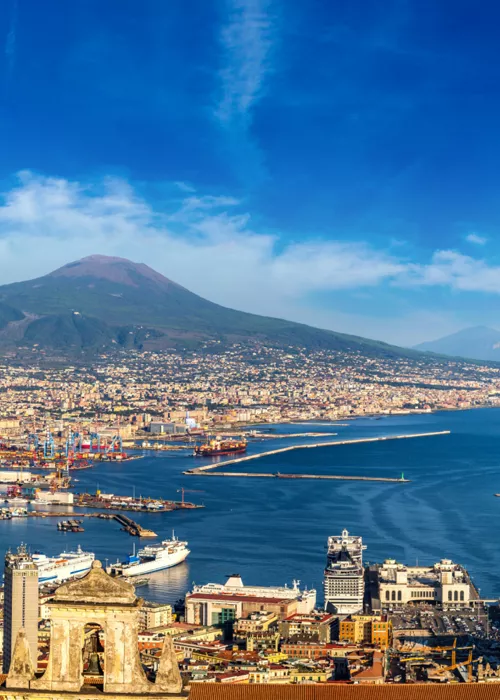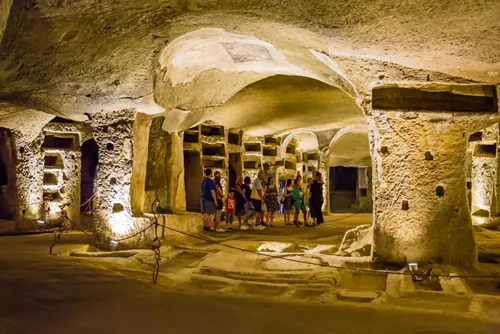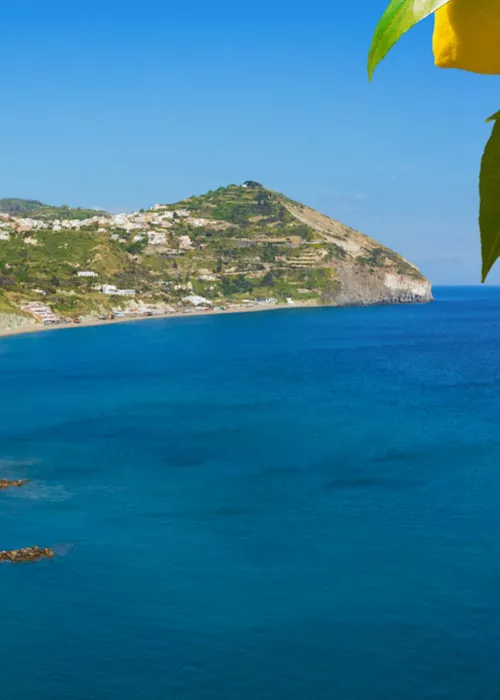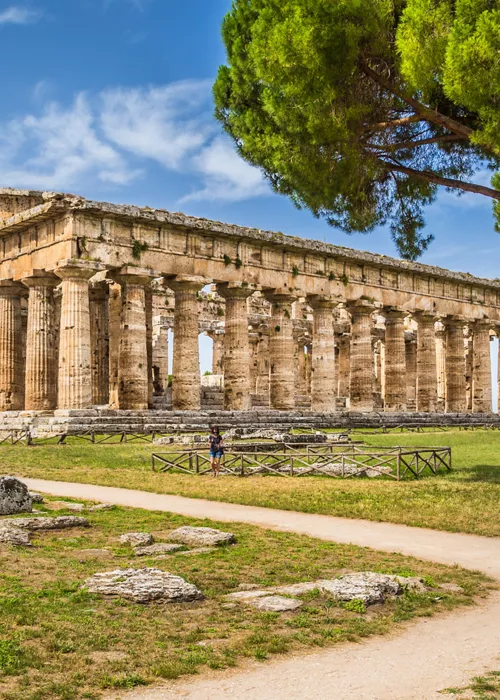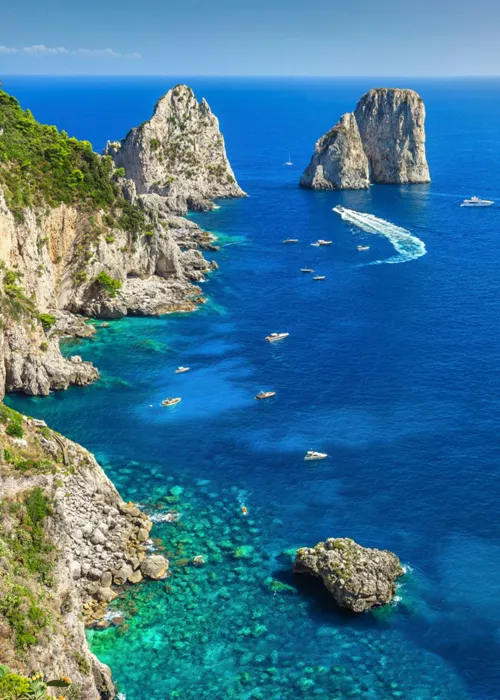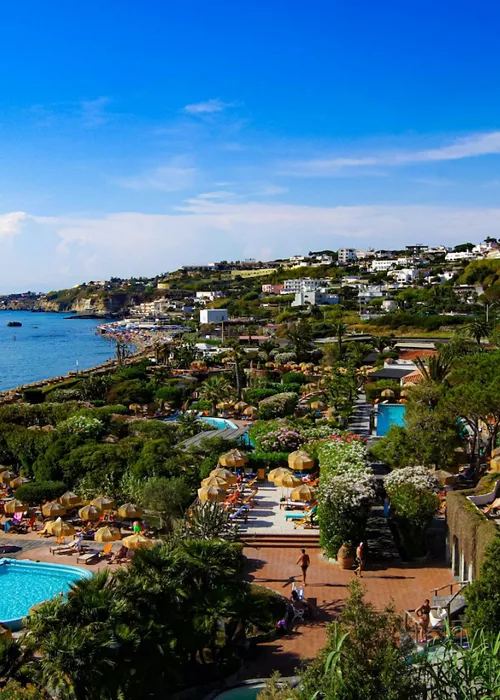Punta Campanella bewitched by the sirens of Ulysses
3 minutes
The Gulf of Salerno and Punta Campanella points straight from the Sorrento Peninsula towards the island of Capri. A scenic wonder including a protected marine area.
At Punta, in ancient times, a temple dedicated to the Goddess Minerva paid homage to the sacredness of the place. Today it is a natural paradise where you can enjoy wandering through winding pathways, discovering the scents and scenery of the Mediterranean shrubbery, and strolling alongside the blue waters as if on the deck of a ship.
What to see at Punta Campanella
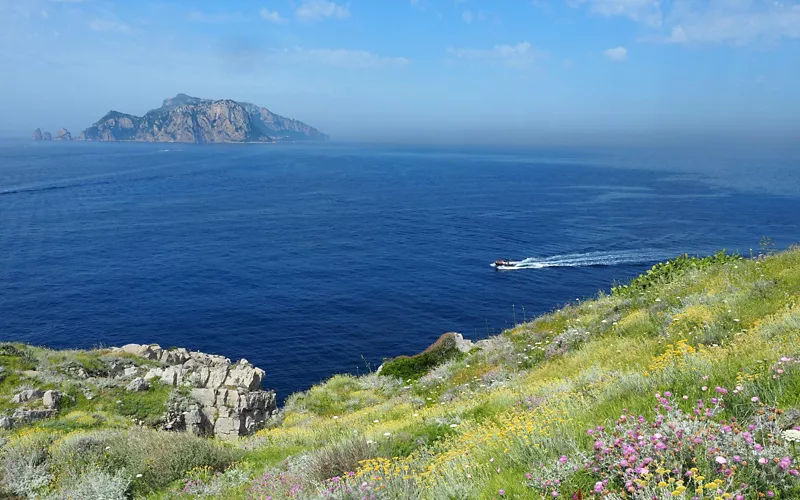
The Sorrento Peninsula and the Amalfi coast, are characterised by a wide biodiversity and various microclimates. From sunny and arid slopes alternating with shady and green valleys, many bays, inlets and caves. Numerous species of birds live undisturbed within these areas making it quite spectacular. The coast here has limestone cliffs overlooking the sea in certain parts, and in other areas the volcanic rocks have built up, sloping gently down to the sea waters.
Under the sea the marine life holds many surprises for you if you enjoy diving: the Posidonia meadow seabed, little disturbed by boat moorings or anchors, create the ideal habit for many organisms. From sea urchins to sea stars, to rare seahorses, as well as numerous species of fish and molluscs.
The caves contribute a lot to the vitality of underwater life: the Punta Campanella peninsula is own of the richest sites of underwater caves in the Mediterranean Sea, about fifty have been identified. They are special locations for the reproduction of different species that live the first stages of their growth in the protected environment before they take off out to sea.
Along the coast there are several watchtowers built after 1558 when Massa Lubrense and Sorrento suffered an attack by the Turks: the towers constituted an alarm messaging system for long stretches of coast. From some of these, a guard, cavaliere would leave on horseback to warn the inhabitants of the hamlets inland of pending danger.
The quadrangular tower at Punta, built by the Angevins in 1334, had a bell, hence the name. Two other towers guard the Sorrentino side, (Fossa di Papa) and the Amalfitano side (Montalto). The trails at the Punto allow you to reach the Bay of Ieranto. Its spectacular beach is set between high cliffs showing the stacked skyline of Capri, about 5km away: a place so intriguing, it is even connected to the myth of the Sirens who bewitched sailors, as happened to Ulysses.
The Sea wrecks of dangerous waters
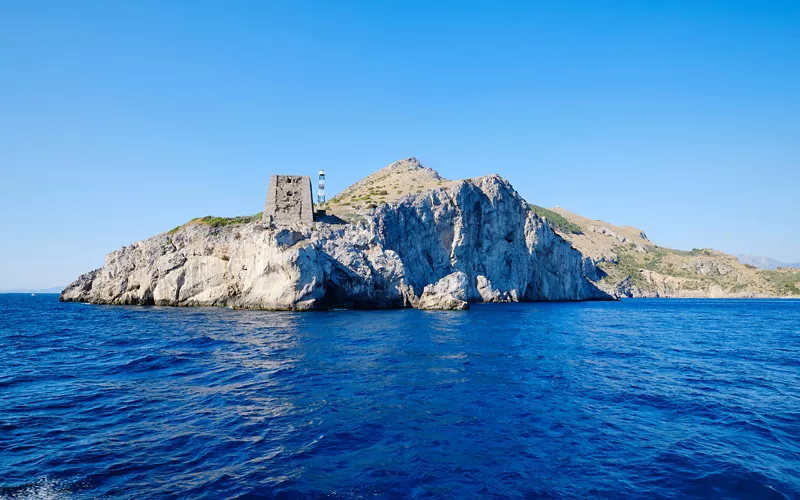
The sea of Punta Campanella is rarely calm: where various currents from the Gulf of Naples and Salermo meet. Many ships, especially in ancient times were shipwrecked in these waters. Even a Roman fleet which Julius Caesar was on sank in front of the Bay of Ieranto. There are numerous wrecks of Roman and pre-Roman ships also located near the islet of Vetara and off the coast of Massa Lubrense that have not yet been studied by archaeologists. There are fragments of amphorae and anchors that are still entangled in the trawler nets of fishermen.
The Roman villas of Punta Campanella
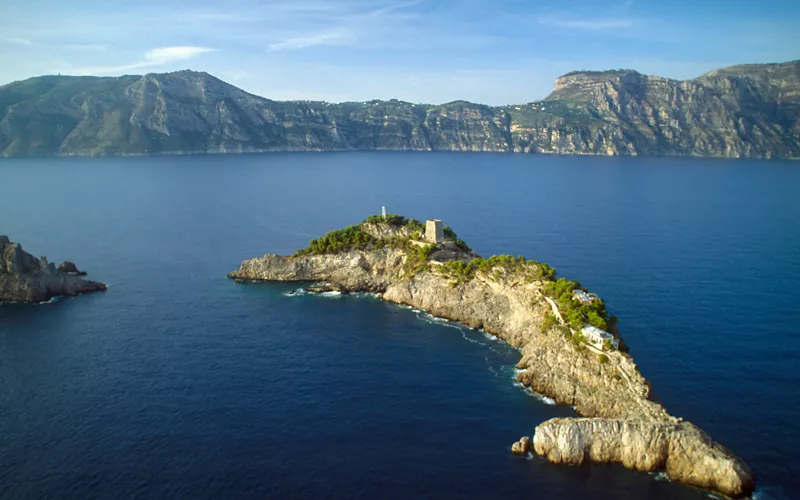
In Roman times on Punta Campanella there was a villa that archaeologists presume had a military garrison functioning to protect Capri. This would have been when Roman emperors such as Augustus, then certainly Tiberius made the island their permanent home. Only a few fragments remain of the structure to be able to hypothesize the structure of the building. Seemingly it had porticoes and terraces sloping down to the sea and was equipped with a lighthouse. Other ruins of villas can be found on the Amalfi side in Marina del Cantone, as well as on the islets of Li Galli and Isca, which was a holiday retreat of the Neapolitan actor and playwright Eduardo De Filippo.

